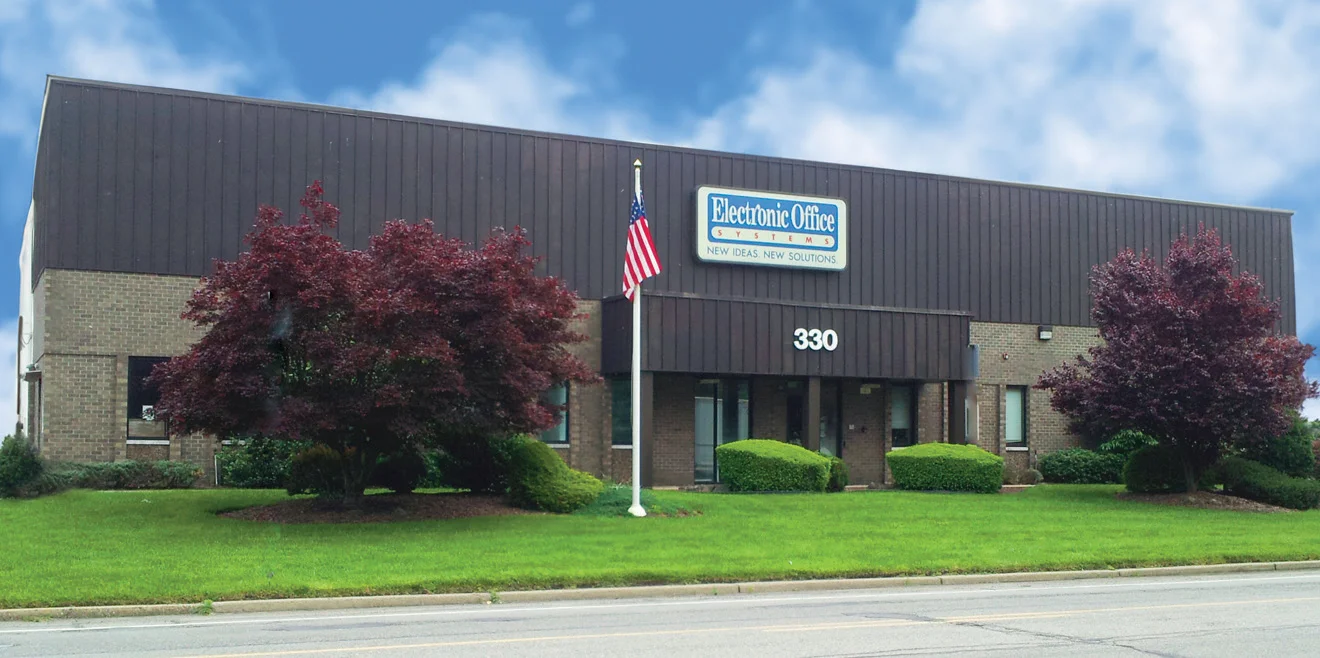Fax machines are an important part of many businesses and homes. They allow users to send and receive documents quickly and easily, without the need for a printer or scanner. With the latest technology, fax machines have come a long way in terms of speed and efficiency. One of the most important aspects of a fax machine is its transmission speed. In order to maximize the efficiency of a fax machine, it is important to understand the different transmission speeds that are supported by fax machines.
Transmission speed is an important factor to consider when choosing a fax machine. It refers to the speed at which a fax machine can send or receive a document. Modern fax machines support a variety of transmission speeds, from the slowest of 9.6 Kbps to the fastest of 33.6 Kbps. Depending on the type of document being sent and the type of fax machine, different speeds may be required.
The 9.6 Kbps speed is the slowest and least efficient transmission speed supported by fax machines. This speed is suitable for sending text-based documents, such as letters and reports. However, if a document contains graphics, such as photographs or drawings, it will take longer to transmit. The 33.6 Kbps speed is the fastest transmission speed supported by fax machines and is suitable for sending large documents with graphics.
It is important to consider the transmission speed when choosing a fax machine. A slower speed may be suitable for basic documents, but if documents with graphics are being sent, a faster speed may be needed. Understanding the different transmission speeds supported by fax machines is the key to choosing the right fax machine for a particular situation.
Understanding Different Types of Fax Machine Transmission Speeds
Fax machines are essential tools for businesses that need to send and receive documents quickly and securely. Fax machines are capable of transmitting documents at various speeds. The transmission speed of a fax machine is determined by the type of technology being used to send the documents. In general, there are three different types of transmission speeds supported by fax machines: analog, digital, and VoIP.
Analog fax machines are the oldest type of fax machines and use a traditional telephone line to send and receive documents. Documents transmitted via analog fax machines typically have low transmission speeds, as they are limited by the speed of the telephone line.
Digital fax machines are relatively new and use digital technology to send and receive documents. These fax machines typically have higher transmission speeds than analog machines, as they are not limited by the speed of the telephone line.
VoIP fax machines are the most recent type of fax machines and use voice over internet protocol (VoIP) technology to send and receive documents. VoIP fax machines typically have the highest transmission speeds, as they are not limited by the speed of the telephone line.
The different transmission speeds supported by fax machines can vary depending on the type of technology being used. For example, analog fax machines typically support transmission speeds of up to 14.4 Kbps, while digital fax machines usually support transmission speeds of up to 33.6 Kbps. VoIP fax machines typically support transmission speeds of up to 56 Kbps.
In addition to the different types of transmission speeds, fax machines also support various modulation techniques. Modulation is a process by which a signal is converted from its original form into a digital format that can be transmitted over a telephone line. Different modulation techniques, such as frequency shift keying (FSK) and phase shift keying (PSK), can have an impact on the transmission speed of a fax machine.
Fax machines have come a long way since their invention, and today they are capable of transmitting documents quickly and securely. The transmission speed of a fax machine is determined by the type of technology being used and the modulation technique employed. Depending on the type of technology and modulation employed, fax machines can support transmission speeds of up to 56 Kbps.
The Role of Modulation in Fax Transmission Speeds
Fax transmission speeds are an important component of fax communication and can have a significant impact on the quality of the data being transmitted. When it comes to fax transmission speeds, the role of modulation is particularly important. Modulation is used to convert digital signals into analog signals, which are then transmitted over a communication channel. Modulation can be done in several different ways, each of which affects the speed and accuracy of the fax transmission.
The most common type of modulation used for fax transmission is Frequency Shift Keying (FSK). FSK works by sending a single frequency over the communication channel, with the frequency changing depending on the data being sent. This allows the fax machine to quickly process and transmit the data at relatively high speeds. However, the accuracy of the transmission can be affected by noise on the communication channel, which can cause errors in the data transmission.
Another type of modulation used in fax transmission is Quadrature Amplitude Modulation (QAM). QAM works by sending two signals over the communication channel, one at a higher frequency and one at a lower frequency. This allows the fax machine to process and transmit the data at higher speeds than FSK, but the accuracy of the transmission is slightly lower due to the higher frequency signals.
The different types of modulation used in fax transmission affect the speed and accuracy of the data transmission. FSK is typically used for slower speeds, while QAM is used for higher speeds. The speeds supported by fax machines can range from 300 baud, which is the slowest speed, up to 14.4K baud, which is the fastest speed typically supported. However, some newer models of fax machines can support even higher transmission speeds.
Impacts of Fax Transmission Speeds on Data Quality
Fax transmission speeds are one of the most important factors when considering the quality of data sent and received. Fax machines rely on the transmission speed of the line to ensure that data is transferred accurately and without errors. The speed of the fax transmission is measured in bits per second (bps). The speed of the transmission is directly related to the quality of the data being sent or received. Higher transmission speeds allow for more accurate data transfer, while lower transmission speeds can result in errors or corruption of the data.
Different fax machines have different transmission speeds that they can support. The most common transmission speeds are 14.4 kbps, 33.6 kbps, and 56 kbps. The 14.4 kbps transmission speed is the slowest and is usually used for sending small documents that don’t require a high level of detail. The 33.6 kbps transmission speed is faster and is better suited for larger documents that require more detail. The 56 kbps transmission speed is the fastest and is recommended for documents that require the highest level of accuracy.
Fax machines also have the ability to adjust their transmission speed based on the line quality. If a fax machine detects that the line quality is poor, it will automatically lower its transmission speed to ensure that the data is transferred accurately. This ensures that the data is transferred without errors, even if the line quality is not ideal.
Overall, fax transmission speeds have a direct impact on the quality of data being sent and received. Higher transmission speeds allow for more accurate data transfer, while lower transmission speeds may result in errors or corruption of the data. Different fax machines have different transmission speeds that they can support, with 14.4 kbps, 33.6 kbps, and 56 kbps being the most common. Fax machines also have the ability to adjust their transmission speed based on the line quality to ensure that the data is transferred accurately, even if the line quality is not ideal.
Effects of Network Capabilities on Fax Transmission Speeds
The effects of network capabilities on fax transmission speeds can be significant. Fax machines are designed to work with different types of networks, such as PSTN, ISDN, and VoIP, and each of these networks can have different transmission speeds. As a result, the speed at which a fax can be sent or received depends on several factors, including the type of network, the type of fax machine, and the distance between the sender and the recipient.
When sending or receiving a fax over a PSTN network, the transmission speed is usually limited to 14.4 Kbps. This speed is usually adequate for most fax transmissions, but it can be too slow for certain applications. For example, when sending large documents or images, a higher transmission speed is often necessary.
ISDN networks typically offer faster transmission speeds than PSTN networks, with speeds ranging from 64 Kbps to 128 Kbps. However, not all fax machines are equipped to use an ISDN network, so the sender and recipient must both be using ISDN-compatible machines in order to take advantage of the faster transmission speeds.
Finally, VoIP networks offer even faster transmission speeds than ISDN networks, with speeds ranging from 384 Kbps to 1.5 Mbps. However, like ISDN, not all fax machines are equipped to use a VoIP network, so the sender and recipient must both be using VoIP-compatible machines in order to take advantage of the faster transmission speeds.
In summary, the transmission speeds supported by fax machines depend on the type of network being used and the capabilities of the fax machine. Generally speaking, PSTN networks support transmission speeds of up to 14.4 Kbps, ISDN networks support transmission speeds of up to 128 Kbps, and VoIP networks support transmission speeds of up to 1.5 Mbps.

Evolution and Advances in Fax Machine Transmission Speeds
Fax machine transmission speeds have advanced greatly over the decades since their invention. Initially, fax machines operated at 9.6 kilobits per second (Kbps). This was the standard speed used by the majority of fax machines until the mid-1990s. However, in the past few years, fax machine transmission speeds have seen significant improvements as new technology has been introduced. These days, fax machines are capable of transmitting data at rates up to 33.6 Kbps, allowing for faster and more efficient communication.
The evolution of fax machine transmission speeds has been driven primarily by advances in modulation technology. Modulation is the process of converting an analog signal into a digital signal for transmission over a telecommunications network. By using more efficient modulation techniques, fax machines can transmit data more quickly and with fewer errors. This has enabled fax machines to support much higher transmission speeds than they once did.
Fax machines are capable of supporting several different transmission speeds. The most common are 9.6 Kbps, 14.4 Kbps, and 33.6 Kbps. The 9.6 Kbps speed is suitable for low-resolution documents, while the 14.4 Kbps and 33.6 Kbps speeds are better suited for transmitting high-resolution documents. Additionally, some fax machines can support even faster speeds if needed. For example, some fax machines are capable of transmitting data at rates up to 56 Kbps.

